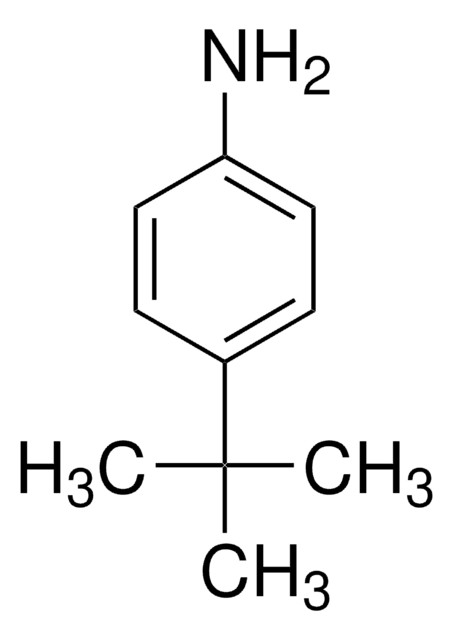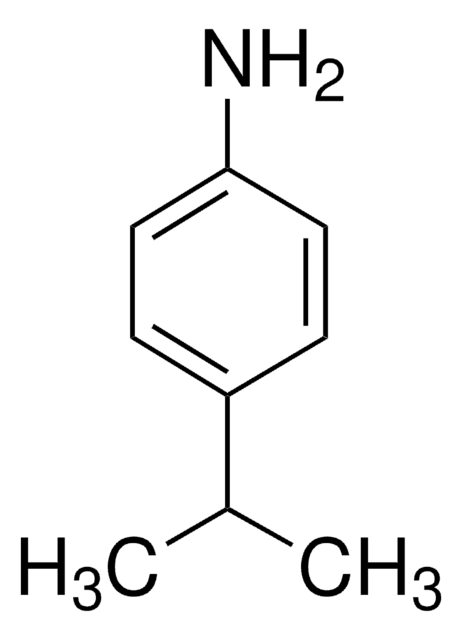About This Item
Produtos recomendados
Ensaio
99%
índice de refração
n20/D 1.516 (lit.)
pb
175 °C/13 mmHg (lit.)
densidade
0.898 g/mL at 25 °C (lit.)
cadeia de caracteres SMILES
CCCCCCCCc1ccc(N)cc1
InChI
1S/C14H23N/c1-2-3-4-5-6-7-8-13-9-11-14(15)12-10-13/h9-12H,2-8,15H2,1H3
chave InChI
ORKQJTBYQZITLA-UHFFFAOYSA-N
Descrição geral
Aplicação
Palavra indicadora
Warning
Frases de perigo
Declarações de precaução
Classificações de perigo
Aquatic Acute 1 - Eye Irrit. 2 - Skin Irrit. 2 - STOT SE 3
Órgãos-alvo
Respiratory system
Código de classe de armazenamento
10 - Combustible liquids
Classe de risco de água (WGK)
WGK 3
Ponto de fulgor (°F)
235.4 °F - closed cup
Ponto de fulgor (°C)
113 °C - closed cup
Equipamento de proteção individual
Eyeshields, Gloves, type ABEK (EN14387) respirator filter
Certificados de análise (COA)
Busque Certificados de análise (COA) digitando o Número do Lote do produto. Os números de lote e remessa podem ser encontrados no rótulo de um produto após a palavra “Lot” ou “Batch”.
Já possui este produto?
Encontre a documentação dos produtos que você adquiriu recentemente na biblioteca de documentos.
Nossa equipe de cientistas tem experiência em todas as áreas de pesquisa, incluindo Life Sciences, ciência de materiais, síntese química, cromatografia, química analítica e muitas outras.
Entre em contato com a assistência técnica










